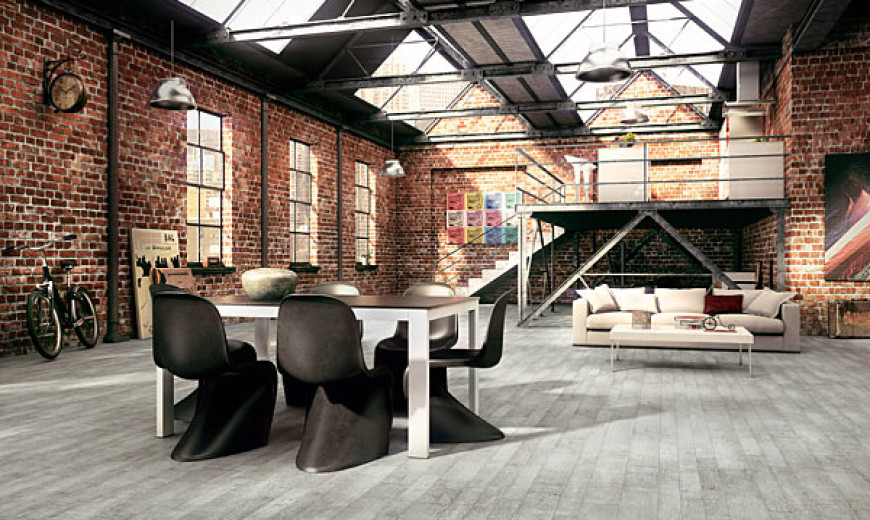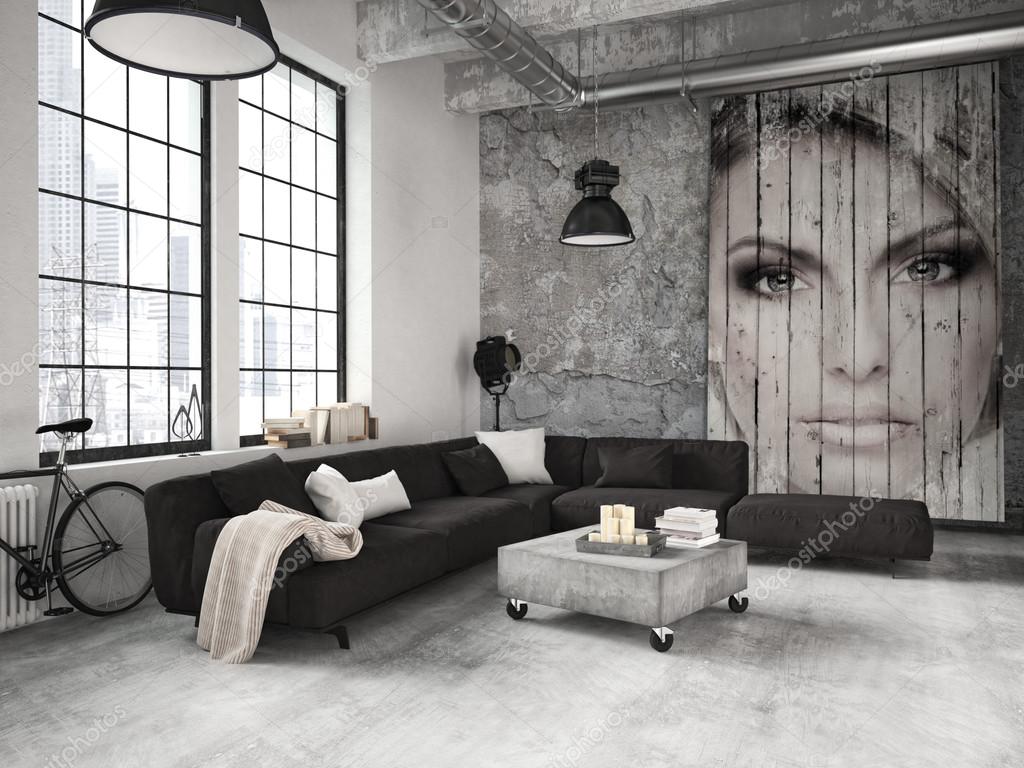Industrial interior design is one of those trends that endures. While the details may change and different influences evolve it, the idea has been around for years and shows no signs of slowing down.
That’s great news for those of us who are fans of this trend.
What is industrial interior design?
Industrial interior design includes a more raw, unfinished look. It can also be industrial or commercial-looking, with exposed concrete and brick, exposed ductwork and materials and designs you would traditionally think of in a workplace rather than home.
Key elements of an interior design scheme can include:
Exposed structure – Exposed brick walls, concrete floors, exposed plumbing and pipework are all good examples.
Elemental materials – Wood, concrete, brick, metal and closer to raw materials all feature in industrial schemes.
Reclaimed or industrial furniture or fittings – Reclaimed features a lot in industrial design like repurposed school furniture, former commercial storage, bar stools, reclaimed parquet and other materials are all common.
While the overarching industrial design scheme has endured, particular trends ebb and flow like they all do.
Are there particular trends we need to follow to create the industrial look?
Open plan living
While not mandatory by any means, industrial often happens within open plan buildings. Loft-style properties, older homes with fewer walls and wide open spaces.
If you can implement open plan design, it can form the basis of an industrial look, as it more closely reflects the factory and commercial spaces that gave birth to the scheme.
Exposed materials
Exposed materials are a key component of industrial schemes. That means exposed brick walls, exposed concrete ceilings or floors, exposed beams, ductwork, plumbing, exposed wires for ceiling lights and so on, will all help.
The extent to which you expose the fabric of the space depends on the type of materials they are. Sometimes less is more and a feature wall or area can work for exposed brick.
Neutral colours
Another key feature of industrial schemes is a neutral palette. You’ll often see a basic colour palette with earthy tones or monochrome, with highlights from accessories.
You can add colour with wood, copper or fixtures and fittings and you would not typically do it with wall colours.
Liberal use of black, white and more earthy colours works best in our experience.
More metals
Using metals within a design can add a very effective industrial look as well as adding contrast colours and texture to a space.
Think brass, copper, exposed steel fixtures and you’re on the right track. Copper has an amazing colour and adds depth and warmth to a space. Brass adds a lightness and heritage, while steel adds a clean look.
You can use metals as exposed pipes, lights, door handles, cupboard handles, a copper pot collection, metal furniture and lots of other places.

Add texture with wood
Use too much metal and monochrome within an industrial design and it risks being clinical and soulless. We don’t want that, which is where wood comes in.
Even if you use a warm metal like copper, you may benefit from a natural material like wood. It’s full of colour, texture and character so can add a lot to a room.
Consider reclaimed parquet flooring, plain wood furniture, used wood tables or wood furniture pieces around the space.
Celebrate the concrete
Depending on the space you’re designing, showcasing the materials you would traditionally hide can really make a design. Like concrete.
As long as it fits the space, exposed concrete ceilings work amazingly well. As do exposed concrete or polished concrete floors.
It won’t work in every space, but if the room supports it, there are fewer more effective methods to add a touch of industry.
Plus, you can always cover it up with paint or carpet when your tastes change!
Reclaimed furniture
Shop savvy and you can find amazing furniture that will outlast all of us. That type of furniture would fit well into an industrial design scheme.
We often see furniture repurposed from schools in industrial design. Old school desks, tables from dining halls, cupboards and storage from science labs and more.
Plus, how many times have we seen parquet floors reclaimed from assembly halls or classrooms used within industrial designs?
Natural wood, heavy varnish, graffiti and metal frames all add character, texture and something unique to a space.
Accessories everywhere
The liberal use of ‘bits’ to fill out the space can make the perfect finishing touch. Think metal light switches, metal cupboard handles, worn-looking rugs, plants, industrial shutters, Victorian-style radiators, reclaimed industrial machinery or parts and you’re on the right track.
The trick with accessories is volume and balance. You want to add as much as the space will take without going over the top and ruining the look.
That’s something you have to be there to appreciate, so we won’t interfere with that!
Industrial interior design
There’s a lot to recommend industrial interior design. It’s flexible, can be used in all kinds of spaces and offers huge scope for experimentation.
It also embraces recycling and reclamation, both of which are the ways to develop your home.
Use the right accessories, rugs and soft furnishings and your space won’t look cold or unwelcoming either. In fact, get it right and it will feel the opposite!






